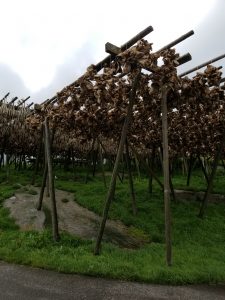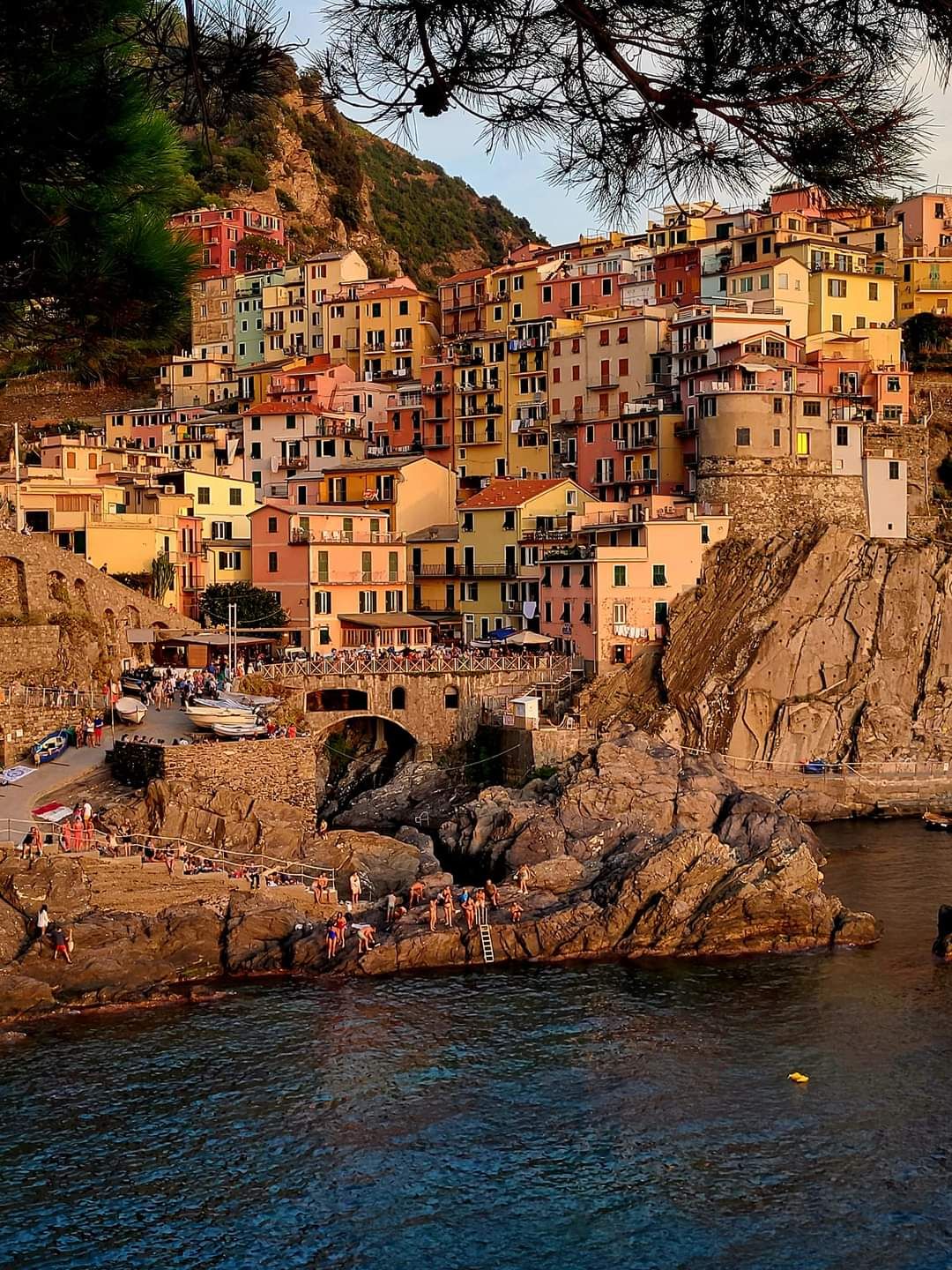About 24 hours after landing in Norway, and spending one night recuperating in Bergen, I set out for the remote islands of the Lofoten archipelago. The Lofoten Islands are north of the Arctic circle, so it’s an arduous journey to get there, but their wild beauty is unrivaled and well worth the trip. One thing that really surprised me when planning this first trip to Norway was how big the country actually is. I had imagined that travelling from Bergen to the Lofotens would be 3-4 hours’ drive. In reality, the distance of over 1,000 miles (!) would have taken about 28 hours due to terrain, traffic and, finally, a ferry schedule! After travelling more than a day to Norway from the States, I did not relish the idea of spending another day (2 days round trip) driving. If there were a direct train route I may have considered it, but there isn’t. If you don’t wish to spend the extra days on the road, I recommend flying. Even flying required nearly 4 hours and 3 flights: Bergen to Oslo, Oslo to Bodø, and Bodø to Leknes, but was actually great because it gave me a bird’s eye view of awe-inspiring fjords, mountains, and glaciers, and most spectacularly the water crossing as we approached the islands.


Lofotr Viking Museum – Vestvågøy

At the airport, I picked up a rental car and headed up the road to the Lofotr Viking Museum in Vestvågøy. A mere 12 minutes from the airport, it was well worth the slight detour from Ballstad where I would be spending the night. The site features a reproduction of an archeological discovery at Borg of the largest Viking chieftain’s house ever discovered. The museum grounds cover a large outdoor area with paths, farm animals, Viking games and a Viking ship that visitors can row on a short trip across the water. The chieftain’s house was very interesting and well done, but, again, it was a reproduction, so it didn’t have the same sort of haunted feeling that authentically very old places have. The better part of this place for me was walking the trails on the grounds, feeling the icy wind on my face, going down to the water’s edge and spotting a distant Viking style vessel headed out for a sail (which could all be done WITHOUT paying the price of admission!). This was my first toe-dip into the Norwegian Arctic North and it was thrilling!
Ballstad

From the Lofotr Museum I headed back the way I came, past the Leknes airport and continued to Ballstad, where I would be spending the night. This seems like a good time to say a couple of words about driving in the Lofotens, so here they are: SO EASY. There is one main highway, the E10, so it’s difficult to get lost. If you need to venture off the highway slightly, GPS works fine; I used Google Maps on my (Verizon) cell phone the entire time I was in Norway. There was almost no traffic when I was there in June, which is supposed to be their busiest month. I had an international driver’s license in Italy long ago, and I can still remember how to read the road signs. By the way, my current (American) driver’s license was all that was required in Norway. The road signs are pretty self-explanatory, but if you are new to driving in Europe you may want to review them here: https://en.wikipedia.org/wiki/Road_signs_in_Norway .
I had one night to spend on my own before meeting up with my brother’s crew so I chose the Hattvika Lodge in Ballstad. In the spirit of adventure, I went for a dormitory bed rather than a private room. I had fantasies of meeting a big group of cool backpackers from all over the world and staying up all night telling stories around a fire pit with a water view. The reality was that, possibly due to the cold, overcast, drizzly weather, there were only two people in the dormitory when I arrived and one of them (the only female) was on her way out! That left me alone with a man I had never met, who seemed uninterested in making new friends. Having never tried the dormitory experience before, this was a little awkward for me, though I have to say that the gentleman whose name I do not remember could not have made himself less intrusive even if he had suddenly become invisible. The dormitory itself was nicer than some hotel rooms I’ve stayed in, with a full kitchen and bathroom, and luxurious down bedding. I had dinner, a canned thick beef stew (the perfect thing for cold, rainy evening), bought at the nearby “Joker” grocery store for about $2US, and went to bed early. I woke refreshed and made coffee for both of us. I had gleaned by then that my dorm mate didn’t seem comfortable speaking English, which could explain his reluctance to interact. My hastily learned Norwegian failed me under pressure, so I tried offering the coffee in clumsy German which seemed to be understood as he accepted a cup with a curt “danke”. I share this story to illustrate that it’s possible you could end up in a similarly awkward situation when opting for a dormitory style room. I chose to remain there and it turned out ok in the end; just be advised that awkwardness is possible, and always listen to your gut when it comes to personal safety!
Camping in Norway
After breakfast in Ballstad I headed back to the Leknes airport to pick up my brother, sister-in-law, and niece. They had spent the previous 3-4 days in a camper van rented from Arctic Campers, a company that has rental pickups and drop-offs in Oslo, Tromsø, and Leknes. The law in Norway, based on the philosophy of “Allemannsretten” or “All Man’s Right”, allows camping anywhere that is 150 meters away from the nearest building. If you’d like to read more about camping rules in Norway, this is a helpful site: https://www.switchbacktravel.com/norway/public-access The Allemannsretten approach makes camping an economical and attractive option in a country known for its wild beauty and wide open spaces.


After dropping off the camper van, we piled into my rental car and drove south, making a stop to see the Glassblower at Vikten. This is a gorgeous place where one can witness glass blowing artisans at work. On a chilly day, the heat from the glass furnaces made the 3 story Scandinavian architecture building very cozy. The 3rd floor allows you to watch the glassblowing from overhead or take a seat on a comfy sofa and let the unobstructed view of an endless grey sea lull you into a state of deep relaxation. Glass vases, paperweights and other items may be purchased on the first floor. Across the street is an equally inviting café with various hidden corners and treehouse like lofts where you can enjoy coffee, fresh waffles and conversation.
Sakrisøy

After a brief coffee and waffle break in Vikten, we were once again on our way down the E10 to Sakrisøy where we checked into Sakrisøy Rorbuer. A rorbu is a traditional Norwegian fishing cabin, and staying in one is a true Norwegian experience. The rorbuer in Sakrisøy, and many other places in Norway, have been lovingly restored and made into the coziest water front cabins imaginable! We had a two bedroom cabin, with 2 more beds in a loft that my niece immediately claimed, and a complete kitchen and living room with a wood burning stove! With panoramic views of the harbor and surrounding mountains, we enjoyed spending time in the cabin next to the fire almost as much as getting outside and exploring the area!

Just a short walk down the pier from our door was the Underhuset Restaurant, where breakfast lunch and dinner were served. Traditional food was on the menu which meant lots of fish! This was where I had my first bacalao, a spicy, tomato-based Spanish fish stew, made by rehydrating dried cod over several days. Bacalao is actually Spanish for salted, dried cod, but the name has been adopted by various recipes around the world that include salted, dried cod as the main ingredient. Since Norway, particularly the Lofotens, has been a major exporter of dried cod for centuries, it follows that such recipes ultimately made their way back.

Dagmar’s Dukkemuseum is a spectacularly impressive collection of rare antique dolls and toys housed in one of the buildings of the Sakrisoy Rorbuer establishment. Dagmar Gylseth is the matriarch of the family that has lived on and fished the waters around the island of Sakrisoy for generation. Her museum houses the largest collection of toys in Norway, and the first of its kind. Dagmar’s grandson was working at the museum the day that we visited and he told us that Dagmar only collected toys and dolls that had been loved by Norwegian children. The number, variety and high quality of dolls and toys is astounding, no doubt finding their way to Norway from world class toymakers in Germany and France as a result of robust Norwegian fishing trade. Above the toy museum is an antique store where we found some of my favorite souvenirs of our stay in the Lofotens.
Å

At the south end of the E10 is Å. At the end of the highway there is a large parking area with access to asphalt walking trails that will take you into town or to the end of the island and a maze of mossy paths that traverse the tops of rocky cliffs offering spectacular views of waves crashing against the steep walls and the endless Norwegian Sea. Walking into town will bring you to more great photo opportunities. On the way back from Å, we stopped at a restaurant in Sørvågen called Maren Anna, a waterside (of course) restaurant with cozy ambience and beautifully prepared food from fresh, local ingredients.
Fredvang


When the weather improved, we went on a daytrip in the other direction (north) to Fredvang for a few hours of beach combing followed by light hiking nearby. The beach was beautiful, even in 40F temps and steady wind! The video below shows the strong winds blowing the tops of the waves back on themselves, so that the waves arrived at the shore trailing misty veils behind them. The trails up the mountainsides around the beach were muddy but not difficult and offered beautiful panoramic views of the beach and surrounding area. When we arrived, we were the only people walking the shore, but by noon many more people had arrived, so I recommend going early to get the best parking spot along the road near the trail head.
For more ideas about what to do in the Lofotens, check these out: https://www.switchbacktravel.com/norway/lofoten-islands/outdoorshttps://www.switchbacktravel.com/norway/lofoten-islands/hiking
Remember to subscribe on this page to receive new blog posts as they are published!


